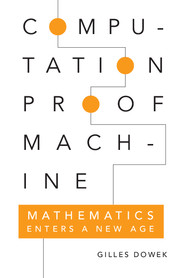Book contents
- Frontmatter
- Dedication
- Contents
- Introduction: In Which Mathematics Sets Out to Conquer New Territories
- PART ONE Ancient Origins
- 1 The Prehistory of Mathematics and the Greek Resolution
- 2 Two Thousand Years of Computation
- PART TWO The Age of Reason
- Part Three Crisis of the Axiomatic Method
- Conclusion: As We Near the End of This Mathematical Voyage …
- Biographical Landmarks
- Bibliography
- References
1 - The Prehistory of Mathematics and the Greek Resolution
from PART ONE - Ancient Origins
Published online by Cambridge University Press: 05 May 2015
- Frontmatter
- Dedication
- Contents
- Introduction: In Which Mathematics Sets Out to Conquer New Territories
- PART ONE Ancient Origins
- 1 The Prehistory of Mathematics and the Greek Resolution
- 2 Two Thousand Years of Computation
- PART TWO The Age of Reason
- Part Three Crisis of the Axiomatic Method
- Conclusion: As We Near the End of This Mathematical Voyage …
- Biographical Landmarks
- Bibliography
- References
Summary
the origin of mathematics is usually placed in Greece, in the fifth century B.C., when its two main branches were founded: arithmetic by Pythagoras and geometry by Thales and Anaximander. These developments were, of course, major breakthroughs in the history of this science. However, it does not go far enough back to say that mathematics has its source in antiquity. Its roots go deeper into the past, to an important period that laid the groundwork for the Ancient Greeks and that we might call the “prehistory” of mathematics. People did not wait until the fifth century to tackle mathematical problems – especially the concrete problems they faced every day.
ACCOUNTANTS AND LAND SURVEYORS
A tablet found in Mesopotamia and dating back to 2500 B.C. carries one of the oldest traces of mathematical activity. It records the solution to a mathematical problem that can be stated as follows: if a barn holds 1,152,000 measures of grain, and you have a barn's worth of grain, how many people can you give seven measures of grain to? Unsurprisingly, the result reached is 164,571 – a number obtained by dividing 1,152,000 by seven – which proves that Mesopotamian accountants knew how to do division long before arithmetic was born. It is even likely (although it is hard to know anything for certain in that field) that writing was invented in order to keep account books and that, therefore, numbers were invented before letters. Though it may be hard to stomach, we probably owe our whole written culture to a very unglamorous activity: accounting.
Mesopotamian and Egyptian accountants not only knew how to multiply and divide, but had also mastered many other mathematical operations – they were able to solve quadratic equations, for instance. As for land surveyors, they knew how to measure the areas of rectangles, triangles, and circles.
- Type
- Chapter
- Information
- Computation, Proof, MachineMathematics Enters a New Age, pp. 5 - 14Publisher: Cambridge University PressPrint publication year: 2015



